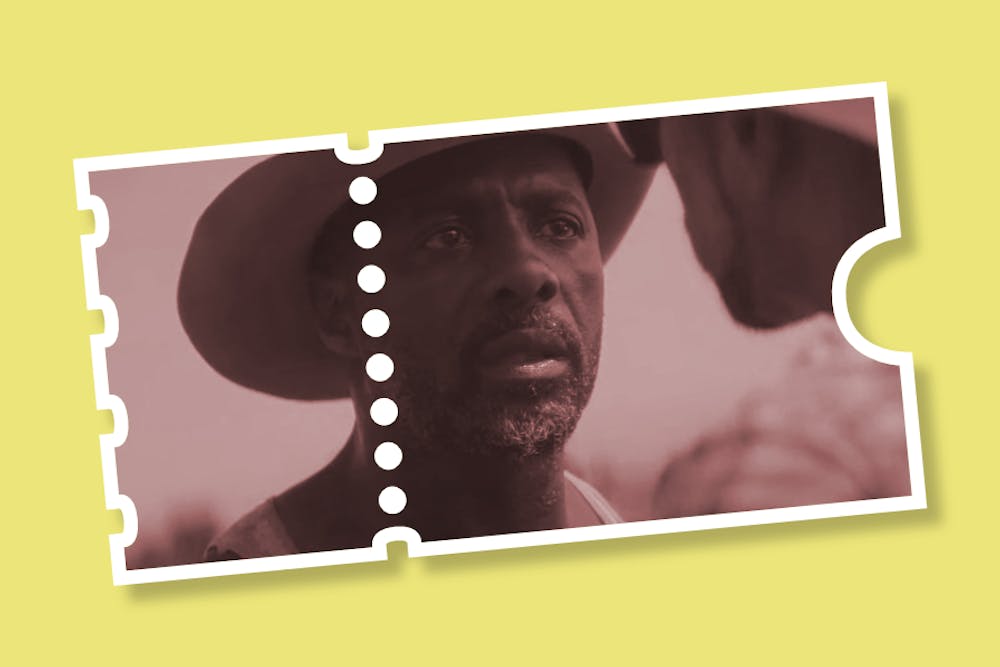Philadelphia is a city rich in history. Cobblestone streets are reminiscent of the horse and buggy carriages that once were the main form of transportation. Nowadays, paying for a horse and buggy ride is a novelty most often exploited by tourists and romantic comedy enthusiasts. However, you may be surprised to hear that there’s still a community of horseback riders on the streets of Philly.
Actor Idris Elba was in Philadelphia scouting for musicians when, from the back of his shiny limo, he spotted a Black horseman in a cowboy hat riding alongside him. It was an intriguing sight: Elba, like most of the world, had yet to learn of the Black cowboys of Philadelphia. But it wasn’t until a few years later, in 2019, that his production company got its hands on a script about this very community. The screenplay for Concrete Cowboy explained what Elba had seen years prior, and he knew it needed to be his next film.
Elba values telling stories that contain “a common truth but a unique perspective,” and he could see that independent Philly writer and director Ricky Staub had given his heart to this operation. Staub spent two years befriending the community of riders at Fletcher Street Urban Riding Club in Strawberry Mansion, and their input helped to keep the film authentic and truthful. A handful of Fletcher Street regulars even share the spotlight on screen, including Jamil Prattis and Ivannah–Mercedes.
In addition to incorporating the oral histories of the Black horsemen in Philadelphia and addressing the erasure of Black cowboys in Hollywood, the narrative of the film follows defiant 15–year old Cole, played by Caleb McLaughlin of Stranger Things fame. Cole is sent to live with his estranged father, played by Elba, over the summer.
McLaughlin's performance in the film is especially stellar. His character's initial tough exterior gradually melts away to reveal inner turmoil, a deep sense of loneliness, and emotional vulnerability. After a heartbreaking father–son confrontation, the story shifts, and Cole displays a willingness to grow in this compelling coming–of–age story.
The teen finds his father’s community of Black cowboys to be a safe haven, which is true for many real–life Philly youths. The stables become a place to go instead of the dangerous streets, which also tempt Cole in the film.
The stables featured in Concrete Cowboy face the threat of gentrification, mirroring the current reality for the real community. The film almost functions as a call to action for its viewers. Multiple GoFundMe pages and nonprofit organizations have been started in order to fundraise for the stables.
The founder of Fletcher Street, Ellis Ferrell, mainly uses his own funds to maintain the riding club, with help from his son and grandson. Ferrell said that he’s had people come from all over the world to film him and produce documentaries that won awards in their countries, but he has yet to receive “one dime” from any of them. The goal was not necessarily to exploit the stables for profit, but the community is criminally overlooked and under–supported. Ferrell is concerned that the multiple GoFundMe campaigns, some of which don't pertain to his club specifically, will actually detract from his independent fundraising.
Erin Brown, a consultant and extra in the film, feels that the cultural history of these groups is being erased as they continue to gradually lose stables. Brown, who’s been riding since she was six years old, is the director of a nonprofit organized by filmmakers: the Philadelphia Urban Riding Academy. Their goal is to find a more permanent home for the Fletcher Street community, as the vacant lot they utilize for riding—both in real life and in the film—is being developed. They also created a GoFundMe page with a goal of two million dollars.
Fletcher Street and the greater community of Philly’s Black cowboys are worth preserving, and they need support. Concrete Cowboy has and will continue to provide some well–deserved recognition for these groups, but without strong financial help, they won’t survive for much longer. Now that we’re learning about this unique heritage and how these clubs have helped so many people find a sense of love and home, it’s up to us to make sure they not only stay afloat, but continue to thrive.







